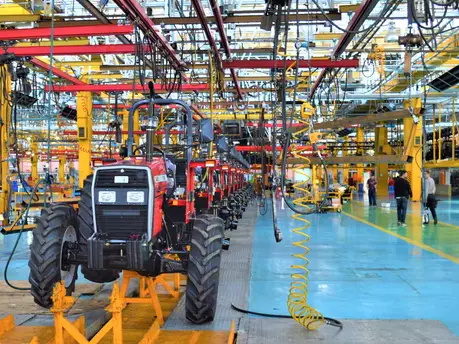Investors are worrying over China’s economic health again, as factory activity unexpectedly contracted in July while property sales continued to decline. All that occurred amid a backdrop of worries of sporadic Covid outbreaks, and calls for more policy stimulus to try and trigger growth.
According to the National Bureau of Statistics, in June the official manufacturing purchasing managers index fell to 49 from 50.2 in June. A measurement of 50 indicates static activity, anything above is an expansion, and a drop below the 50-level indicates a contraction in activity. In a separate report, data aggregated from Chinas top 100 property developers indicated a continued housing slump. China’s top 100 developers reported sales fell 39.7% from last year, compared to a drop of 43% the previous month, according to data from the China Real Estate Information Corp.
Due to the government’s strict Covid policies, China’s economic recovery remains fragile. In the manufacturing center of Shenzhen, a Covid flareup shut down factory operations there, again triggering fears about global supply chains.
On Monday, China’s benchmark bond yield fell 3 basis points, hitting 2.73%, the lowest reading since May 30th.
In the second quarter, GDP growth was the slowest since the first outbreak in Wuhan. Economists expect full-year growth of just 4% or slightly lower this year. As the property sector continues to decline and weigh down the economy, experts say additional policy stimulus remains necessary.
Last week the CCP’s top decision makers indicated the government is softening the government’s growth target of 5.5%, however they notably did not announce any new stimulus policies to boost the economy.
The government has increased infrastructure spending in the second half in an effort to spur growth. The government’s state economic planner said accelerating construction of major infrastructure projects will offer strong support to stabilize the economy. They noted the third quarter will be a critical window to achieve such stabilization.
The slowdown in manufacturing was broad-based according to the data. Large, medium, and small size operations were all contracting. Non-manufacturing PMI, measuring construction and services expanded, though weakly.
The National Bureau of Statistics cited seasonal factors and a drop in high energy consuming industries as being responsible for the drop in manufacturing. Orders, new and new-export, in both manufacturing and non-manufacturing all contracted for the month.
The bureau said, “Insufficient market demand is the main difficulty faced by manufacturing enterprises at present, and the foundation for the recovery of manufacturing industry needs to be consolidated.”


